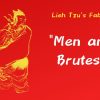
Have you ever stumbled upon a captivating Chinese folktale, filled with fantastical creatures and thrilling adventures? While these stories are undeniably entertaining, their true magic lies deeper. Ancient Chinese tales act as treasure troves of wisdom, offering timeless insights into human nature, personal growth, and the values that guide a fulfilling life.
From the philosophical depths of Taoism and Confucianism to the universal themes of love, courage, and redemption, these tales continue to inspire and enlighten readers across generations.
They serve as wise mentors, patiently imparting valuable lessons that transcend time and culture. So, prepare to embark on a journey of discovery! This article delves into the profound wisdom embedded within these folktales, exploring how they can empower us to navigate challenges, cultivate virtues, and achieve personal growth in our own lives.
Wisdom and Philosophy
For centuries, ancient Chinese tales and fables have captivated audiences with their fantastical creatures, thrilling adventures, and captivating narratives. But beneath the surface of these enchanting stories lies a deeper layer – a treasure trove of profound wisdom and philosophy. These tales offer timeless insights into the complexities of human nature, the dynamics of relationships, and the journey of personal growth.
Think of them as wise teachers, patiently imparting valuable lessons that transcend time and culture. They weave philosophical concepts like Taoism, Confucianism, and Buddhism into the fabric of their narratives. Through metaphors, allegories, and the triumphs and struggles of their characters, these tales illuminate the path to a more fulfilling life.
Through the lens of Taoism, ancient Chinese tales emphasize the importance of living in harmony with nature and embracing the concept of “wu wei,” or effortless action. Characters in these stories often navigate life’s challenges with grace and resilience, embodying the Taoist philosophy of going with the flow and finding balance in all things.
Confucian values of benevolence, righteousness, propriety, wisdom, and integrity are reflected in the moral fabric of Chinese folklore. Protagonists are often presented with moral dilemmas, teaching readers the importance of upholding virtuous conduct and fulfilling one’s societal obligations.
Buddhist themes of compassion, impermanence, and the cycle of karma are interwoven into the narratives, offering readers profound reflections on the nature of suffering, enlightenment, and the pursuit of inner peace.
These philosophical underpinnings not only enrich the storytelling experience but also invite readers to contemplate profound existential questions and explore the deeper meaning of life.
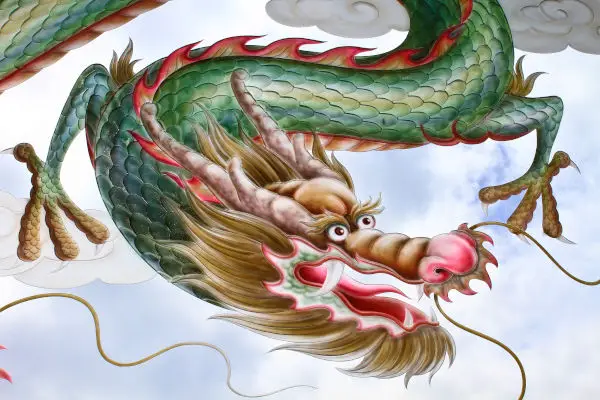
Virtues and Values
Ancient Chinese tales aren’t just entertaining; they serve as moral compasses, guiding readers towards a life of virtue. These stories consistently promote core values that have shaped Chinese culture for millennia. Honesty, integrity, compassion, perseverance, and humility are woven into the very fabric of the narratives, reminding us of the importance of these qualities in our daily lives.
In these narratives, characters exemplify the importance of honesty, staying true to oneself, and being sincere in their words and actions. Through their honesty, they navigate challenges with integrity, earning the trust and respect of those around them.
A good example is the story of “The Golden Ax.” This tale revolves around a poor young woodcutter who lives with his elderly mother in a remote village near a dense forest. The woodcutter’s livelihood depends on selling firewood, which he gathers by chopping down trees in the forest.
One day, as he goes about his work, his old rusty ax slips from his hands and falls into a murky lake, leaving him devastated as it was his only tool for making a living. In his distress, an old man named Shilyongnim, a heavenly being, appears and offers to help. Shilyongnim dives into the lake and retrieves a shiny golden ax, assuming it belongs to the woodcutter, but the woodcutter honestly states that it is not his.
Shilyongnim repeats this process with a silver ax, which the woodcutter also denies. Finally, Shilyongnim retrieves the woodcutter’s own rusty ax, which the woodcutter joyfully claims as his own. Impressed by the woodcutter’s honesty, Shilyongnim rewards him by allowing him to keep both the golden and silver axes.
The tale emphasizes the value of honesty, integrity, and the rewards that come from being truthful and virtuous. (watch the video below)
Compassion is another central theme, as characters demonstrate kindness and empathy towards others, regardless of their social status or circumstances. By showing compassion, characters forge meaningful connections and foster harmony within their communities.
As an example we can mention “The Story of the White Snake.” This story narrates the romance between a human scholar named Xu Xian and a white snake spirit named Bai Suzhen, who assumes human form.
Despite facing societal disapproval and encountering challenges from malevolent forces, their love endures. This ancient Chinese tale delves into themes of love, compassion, and forgiveness, conveying the profound message that love transcends boundaries and can triumph over adversity.
Through the story of Xu Xian and Bai Suzhen, readers learn the timeless lesson that genuine love has the power to overcome obstacles and bridge differences, inspiring them to embrace love with courage, empathy, and resilience in their own lives.
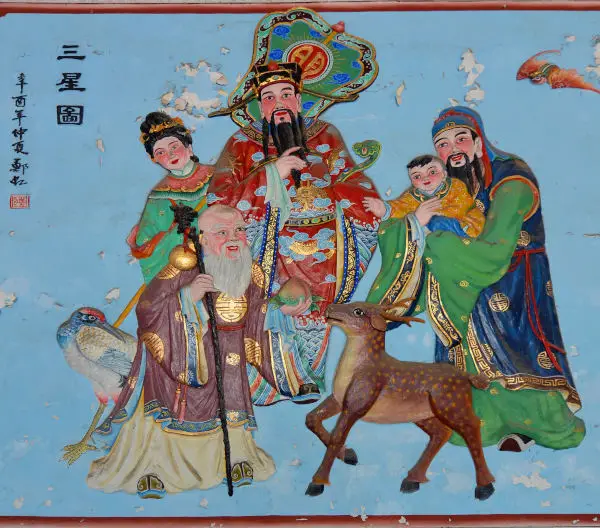
Perseverance is celebrated in Chinese folklore, with protagonists facing formidable obstacles and enduring hardships to achieve their goals. Their unwavering determination inspires readers to overcome adversity and pursue their dreams with resilience and grit.
Here we can mention “The Journey to the West,” the classic Chinese novel that follows the Buddhist monk Xuánzàng and his three disciples, Sūn Wùkōng (Monkey), Zhū Bājiè (Eight-Precept Pig), and Shā Wùjìng (Friar Sand), on a pilgrimage to India to obtain Buddhist scriptures.
Throughout the journey, the characters face numerous adversities, often involving Xuánzàng being captured or threatened by various monsters and challenges. The novel portrays the characters’ resilience, courage, and moral character as they navigate through obstacles with determination and wit, highlighting their ability to overcome adversity through teamwork, loyalty, and spiritual growth.
The story serves as a spiritual allegory steeped in Chinese folk religion, mythology, and moral teachings, emphasizing the importance of perseverance, virtue, and the triumph of good over evil in the face of challenges.
Humility is a cherished virtue in Chinese culture, and characters in these tales often display modesty and self-effacement, eschewing arrogance and ego. Through their humility, they embody the Confucian principle of humility and respect for others, fostering harmonious relationships and social cohesion.
These moral lessons not only enrich the narratives but also encourage readers to cultivate inner virtues and lead virtuous lives in accordance with traditional Chinese ethical principles.
“Humility is the solid foundation of all virtues.” – Confucius
Virtues and Values in Ancient Chinese Tales
| Virtue/Value | Description | Examples from Tales |
|---|---|---|
| Honesty | Being truthful and sincere in words and actions | “The Empty Pot” – Ping’s honesty |
| Integrity | Upholding moral principles and doing what is right | “The Tale of Mulan“ – Mulan’s integrity |
| Compassion | Showing kindness and empathy towards others | “The Story of the White Snake” – Bai Suzhen’s compassion |
| Perseverance | Continuing to strive towards goals despite obstacles | “The Journey to the West “ – Xuánzàng’s perseverance |
| Humility | Being modest and humble, avoiding arrogance | “The Empty Pot” – Ping’s humility |
Do you enjoy Chinese fables? Click here for more – Opens in new tab.
Character Development
In Chinese folktales, main characters go through big changes as they face tough challenges and learn important things about themselves.
These tales often depict characters facing adversity with courage and resilience, navigating through obstacles that test their strength, wit, and moral character. Through their struggles, protagonists undergo significant growth, evolving from ordinary individuals into enlightened beings who embody virtues such as courage, compassion, and wisdom.
A good example is “The Tale of Mulan.” The story of a young woman who disguises herself as a man to take her father’s place in the army, demonstrating remarkable courage and perseverance as she fights for her country.
This ancient Chinese tale embodies the virtues of courage, perseverance, and filial piety, illustrating the importance of bravery in the face of adversity and the willingness to sacrifice for the greater good.
Mulan’s selfless act serves as a powerful reminder of the values of honor, duty, and loyalty, inspiring readers to emulate her example and strive for moral excellence in their own lives.

One of the most compelling aspects of character development in Chinese folklore is the emphasis on learning from mistakes and embracing the lessons gleaned from failure. Protagonists are not immune to errors or misjudgments; instead, they confront their shortcomings with humility and introspection, using these experiences as catalysts for personal growth.
Through their actions and decisions, characters demonstrate the transformative power of virtue, showcasing the profound impact that integrity, compassion, and perseverance can have on one’s life and the lives of others.
Whether it’s a humble farmer who displays extraordinary kindness towards a stranger or a courageous warrior who sacrifices personal glory for the greater good, these characters inspire readers to emulate their example and strive for moral excellence.
In “The Empty Pot,” a young boy named Ping is unable to grow a flower from the seeds given to him by the Emperor. However, he earns the Emperor’s praise for his honesty when he admits that he couldn’t grow a flower.
This ancient Chinese tale teaches the value of honesty, integrity, and humility. It emphasizes the importance of telling the truth and owning up to one’s mistakes, even when faced with disappointment or failure.
Through Ping’s integrity and willingness to accept the truth, readers learn the enduring lesson that honesty and humility are virtues to be cherished and practiced in all aspects of life.
By highlighting the triumph of the human spirit over adversity and the enduring power of moral virtue, Chinese folktales offer readers timeless lessons on resilience, empathy, and the pursuit of inner fulfillment. Through the transformative journeys of these characters, readers are reminded of their own capacity for growth and enlightenment, inspiring them to embrace life’s challenges with courage, humility, and grace.
Character Development Arcs in Chinese Folktales
| Tale Title | Protagonist | Trials/Challenges | Transformations/ Lessons Learned |
|---|---|---|---|
| “The Tale of Mulan” | Mulan | Disguising as a man, facing battle | Embracing courage, perseverance, and sacrificing for honor |
| “The Empty Pot” | Ping | Inability to grow a flower, admitting truth | Learning the value of honesty, integrity, and humility |
| “The Story of the White Snake” | Xu Xian & Bai Suzhen | Society’s disapproval, malevolent forces | Understanding the power of love, compassion, and forgiveness |
| “The Legend of the Four Beauties” | Various | Society’s expectations, personal desires | Reflecting on beauty, vanity, and the importance of virtue |
| “The Magic Paintbrush” | Ma Liang | Poverty, Lack of Resources | Perseverance, Resourcefulness, Importance of Imagination |
| “Journey to the West” | Monkey King | Imprisonment, Trials on his journey | Humility, Patience, Cooperation |
Related reading: How Chinese Family Values Shape Personal Development – Opens in new tab
Practical Applications
Ancient Chinese tales aren’t just stories; they’re like guidebooks for life. Despite being centuries old, the themes and lessons in Chinese folklore are remarkably universal. Whether it’s dealing with love, loss, ambition, or betrayal, the struggles and triumphs of the characters in these tales resonate with people from all walks of life. Let’s see how we can use the wisdom from these tales to make our own lives better.
By looking at the struggles and triumphs of characters in these tales, we can learn valuable lessons about facing challenges and growing as individuals. For example, when a character in a story shows kindness or perseverance, we can think about how we can apply those qualities to our own lives and relationships.
Imagine you’re facing a tough decision or a moral dilemma. You can turn to these stories for guidance. Think about how the characters in the tales deal with similar situations and what we can learn from their choices. Maybe there’s a story about honesty that can help you decide what to do when you’re tempted to lie or cheat.
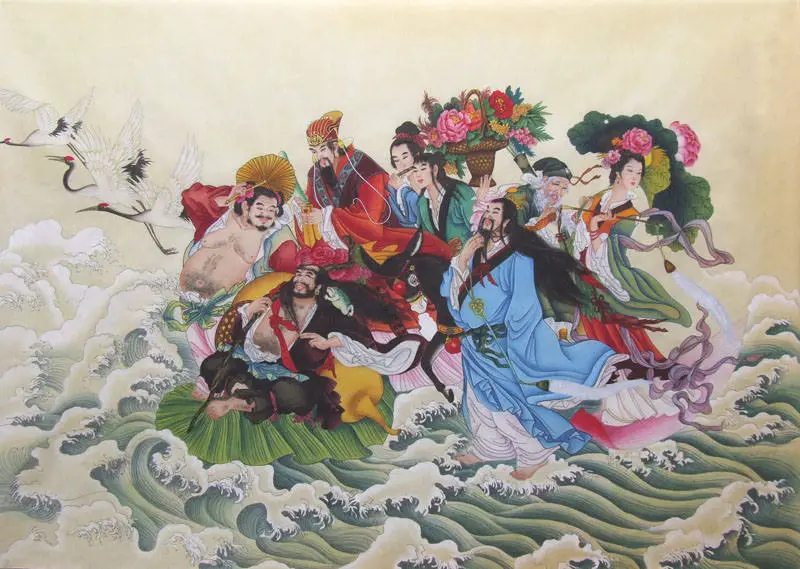
Moreover, the timeless wisdom found in Chinese folklore offers practical guidance for navigating the complexities of modern life. From managing relationships to finding purpose and meaning in our work, these tales provide valuable lessons that are as relevant today as they were centuries ago. By drawing parallels between the experiences of ancient characters and our own, we can find inspiration and guidance for personal growth and self-improvement.
Reflecting on these tales can also help us cultivate virtues like honesty, kindness, and courage in our daily lives. We can ask ourselves questions like, “How can I be more like the brave hero in that story?” or “What can I learn from the wise elder who always does the right thing?”
So, next time you read an ancient Chinese tale, don’t just enjoy the story—think about how you can apply its lessons to your own life. You might be surprised at how much wisdom you can find in these timeless stories.
End Words
As we’ve explored, ancient Chinese tales offer a treasure trove of wisdom that continues to resonate in the modern world. By delving into these stories, we gain valuable insights into cultivating virtues, navigating challenges, and fostering meaningful relationships. Remember, personal growth is a lifelong journey, and these folktales serve as a guiding light along the way.
So, the next time you encounter a captivating Chinese tale, take a moment to ponder its deeper meaning. You might just discover a timeless pearl of wisdom waiting to be unearthed and applied to your own life’s journey.
Related reading: How Ancient Chinese Wisdom Holds the Keys to Modern Personal Growth– Opens in new tab
Online Courses about Chinese Culture from Udemy (Aff.link)
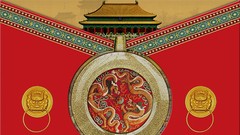
Stay in Touch
 Join our newsletter by using the forms on this website or click here!
Join our newsletter by using the forms on this website or click here! Follow us on Google News
Follow us on Google News Follow us on Facebook
Follow us on Facebook
Feature Image from Depositphotos

